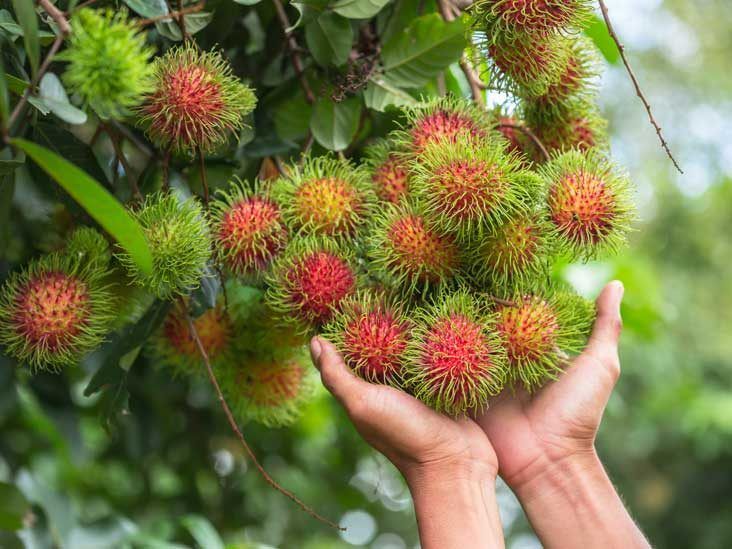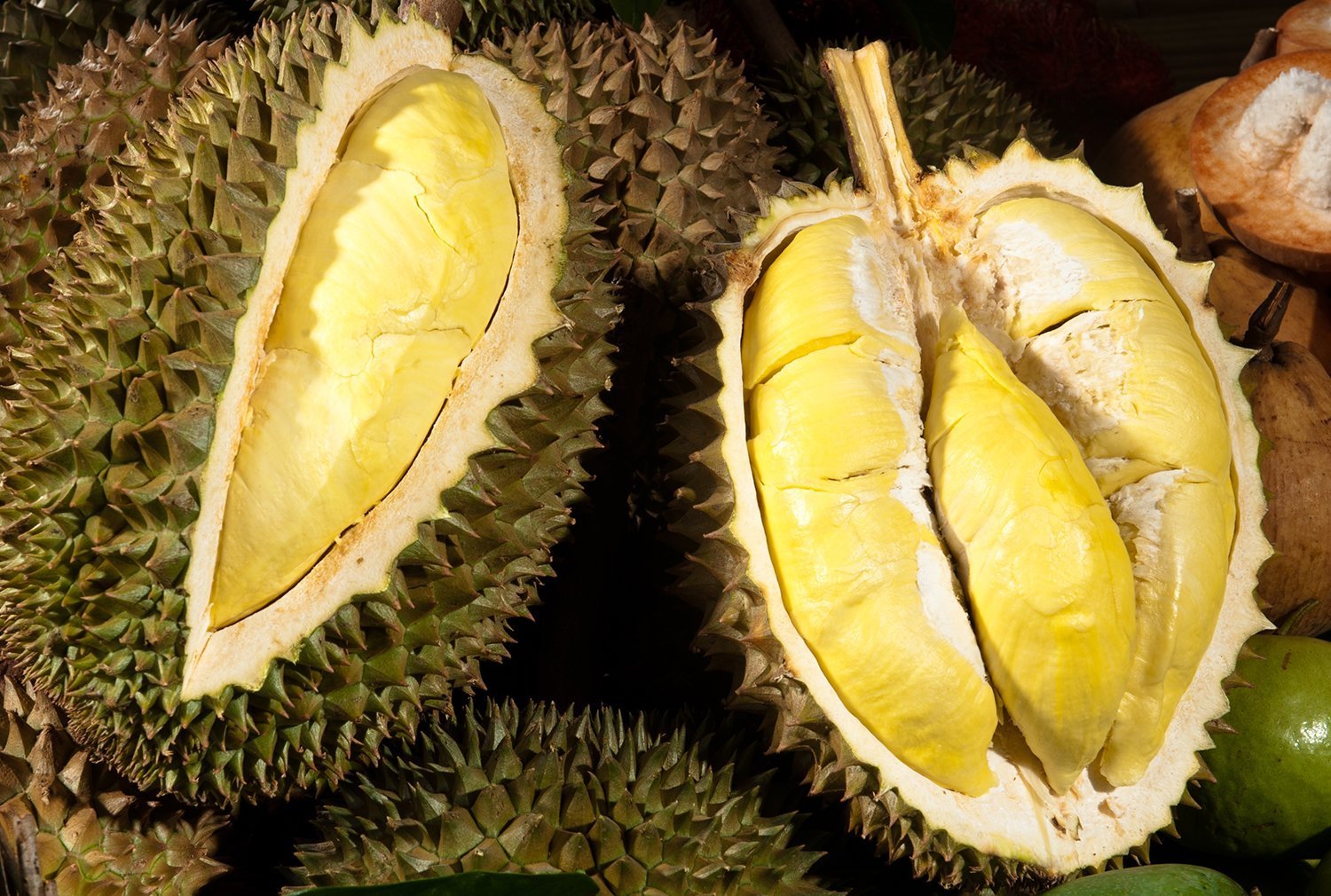
Top 10 Vietnamese fruits – must eat and enjoy the taste
Vietnam’s tropical climate blesses it with a vibrant array of delicious fruits. Here are 10 must-try Vietnamese fruits, each offering a unique and delightful taste experience you won’t want to miss!
Top 10 Vietnamese fruits – must eat and enjoy the taste
1.Mango (Xoài) – No.1 Vietnamese fruits

- Taste: Sweet, fragrant, and juicy Vietnamese fruits, with variations depending on the type (e.g., cát chu mangoes are honey-sweet, tượng mangoes are larger and slightly tangy). Green mangoes are crisp and sour.
- Price: Relatively affordable and widely available, prices vary seasonally and by variety (e.g., cát chu can be more expensive). Expect to pay anywhere from VND 20,000 – VND 60,000+ per kg depending on the type and season.
- Season: Different varieties ripen at different times, but the main mango season in Southern Vietnam is typically from March to May. Some varieties can be found year-round.
- Region: Grown throughout Vietnam, with famous mango-growing regions including the Mekong Delta (e.g., Đồng Tháp, Tiền Giang) for sweet varieties and the Southeast for green mangoes.
- Related Dishes: Freshly eaten, mango smoothies (sinh tố xoài), green mango salad (gỏi xoài), mango sticky rice (xôi xoài – influenced by Thai cuisine), unripe mangoes dipped in chili salt (xoài chấm muối ớt).
- Way of Eating: Peel and slice the ripe fruit. Green mangoes are peeled, sliced or shredded, and often eaten with chili salt or used in salads.
2. Dragon Fruit (Thanh Long)
- Taste: Mildly sweet and refreshing, with a slightly watery texture. Red-fleshed varieties tend to be sweeter and more flavorful than white-fleshed ones.
- Price: Generally affordable and widely cultivated. Prices range from VND 15,000 – VND 40,000 per kg depending on the type (white or red flesh) and season.
- Season: Several harvests throughout the year, with peak seasons typically in October-November and April-May in the main growing regions.
- Region: Primarily grown in the Southern and Central regions, with Bình Thuận province being the most famous dragon fruit growing area.
- Related Dishes: Eaten fresh, dragon fruit smoothies (sinh tố thanh long), dragon fruit salad, sometimes used in stir-fries or desserts for its vibrant color.
- Way of Eating: Slice the fruit in half and scoop out the flesh with a spoon, or peel the skin and cut it into chunks. The small black seeds are edible.
3. Rambutan (Chôm Chôm)

- Taste: Sweet and slightly tangy Vietnamese fruits, juicy flesh with a texture similar to grapes.
- Price: Moderately priced, with prices fluctuating depending on the season and variety. Expect to pay around VND 30,000 – VND 70,000 per kg.
- Season: The main rambutan season is during the rainy season, typically from May to October.
- Region: Widely grown in the Southern provinces, especially in the Mekong Delta and Southeast regions.
- Related Dishes: Mostly eaten fresh as a snack. Can be used in fruit salads or occasionally in sweet soups (chè).
- Way of Eating: Pinch and twist the hairy skin to open and reveal the translucent flesh. Be careful of the seed in the center.
4. Longan (Nhãn)
- Taste: Very sweet, with a slightly musky flavor Vietnamese fruits. The flesh is juicy and translucent.
- Price: Generally affordable and widely available, especially during its season. Prices range from VND 20,000 – VND 50,000 per kg.
- Season: Primarily harvested in the summer months, around June to August.
- Region: Grown in various parts of Vietnam, with significant cultivation in the Northern and Southern regions.
- Related Dishes: Eaten fresh as a snack, added to sweet soups (chè nhãn lồng), dried longan is used in traditional medicine and some desserts.
- Way of Eating: Peel off the thin, brittle brown skin to reveal the flesh. The hard, black seed is not edible.
5. Mangosteen (Măng Cụt) – Special Vietnamese fruits
:max_bytes(150000):strip_icc()/ms-mangosteen-getty-26ec2206ba3a478ab4028dbde841aadb.jpg)
- Taste: A delightful balance of sweet and tangy, with a slightly floral aroma. The flesh is soft, juicy, and segmented. Often considered one of the “queens of fruits.”
- Price: Can be more expensive than other common fruits, especially out of season. Prices can range from VND 50,000 – VND 150,000+ per kg depending on availability.
- Season: Typically in season from May to August.
- Region: Primarily grown in the Southern regions of Vietnam.
- Related Dishes: Best enjoyed fresh to appreciate its delicate flavor. Sometimes used in salads (gỏi măng cụt).
- Way of Eating: Gently squeeze the fruit around the middle to crack the thick purple rind and then carefully open it to access the segments of flesh. Some segments may contain seeds.
6. Pomelo (Bưởi)
- Taste: Sweet and slightly tangy, less acidic than grapefruit. Different varieties have varying levels of sweetness and juiciness.
- Price: Moderately priced and widely available year-round, with prices around VND 20,000 – VND 50,000 per fruit (depending on size and variety).
- Season: While available year-round, some varieties have peak seasons, such as August and December.
- Region: Grown in various regions, with famous varieties from the Mekong Delta (e.g., Năm Roi pomelo) and the North (e.g., Đoan Hùng pomelo).
- Related Dishes: Eaten fresh, used in salads (gỏi bưởi), the peel can be candied.
- Way of Eating: Cut through the thick rind and peel it away to reveal the juicy segments.
7. Star Apple (Vú Sữa)
- Taste: Sweet and milky, with a unique, slightly sticky texture. The skin and the outer layer of the Vietnamese fruits can be slightly bitter.
- Price: Moderately priced, typically around VND 30,000 – VND 60,000 per kg.
- Season: Primarily in season from February to March.
- Region: Widely grown in the Mekong Delta region, with Cần Thơ province being particularly famous for its star apples.
- Related Dishes: Mostly eaten fresh. Sometimes used in smoothies or desserts.
- Way of Eating: There are two common ways:
- Cut it in half horizontally and scoop out the flesh with a spoon, avoiding the seeds and the outer skin.
- Gently massage the fruit all around until it softens, then puncture a hole at the bottom and squeeze the sweet, milky juice directly into your mouth.
8. Durian (Sầu Riêng) – Savory Vietnamese fruits

- Taste: Known for its strong, pungent aroma (which many find either delicious or offensive). The flesh is creamy, rich, and intensely sweet with savory undertones.
- Price: Can be quite expensive, especially for high-quality varieties. Prices can range from VND 80,000 – VND 200,000+ per kg.
- Season: Typically in season from May to September.
- Region: Primarily grown in the Southern provinces, especially in the Mekong Delta and Southeast regions.
- Related Dishes: Eaten fresh by durian lovers, used in desserts like durian sticky rice (xôi sầu riêng), durian ice cream, and pastries.
- Way of Eating: The thick, spiky husk needs to be cut open to reveal the segments of yellow flesh.
9. Sapodilla (Hồng Xiêm)
- Taste: Very sweet with a malty or molasses-like flavor and a slightly grainy texture when fully ripe.
- Price: Generally affordable and available throughout the year, with prices around VND 20,000 – VND 40,000 per kg.
- Season: Fruits year-round, but peak seasons can vary regionally.
- Region: Grown in various parts of Vietnam, including the North (e.g., Xuân Đỉnh, Hanoi) and the South.
- Related Dishes: Eaten fresh, made into smoothies (sinh tố hồng xiêm).
- Way of Eating: Wash the fruit, and the skin is edible, though some prefer to peel it. Cut it into wedges and remove the black seeds.
10. Rose Apple (Quả Roi/Quả Mận)
- Taste: Light, refreshing, and slightly sweet with a watery texture, similar to a crisp pear with a hint of rosewater.
- Price: Generally affordable and widely available, with prices ranging from VND 15,000 – VND 40,000 per kg.
- Season: Grows most of the year in the South, with peak seasons varying by variety.
- Region: Primarily grown in the Southern regions of Vietnam.
- Related Dishes: Mostly eaten fresh as a refreshing snack. Can be used in salads.
- Way of Eating: Wash the fruit and eat it whole, biting around the core (avoid the base). It can also be sliced.
This list provides a starting point for your Vietnamese fruit adventure! Don’t hesitate to try other local fruits you encounter, as Vietnam boasts a rich variety of delicious tropical produce. Enjoy!
See also: Bubble tea in Vietnam: Top shops with best signatures
Tips to buy Vietnamese fruits
1. Shop Vietnamese fruits at Local Markets:
- Variety and Freshness: Local markets usually offer a wider variety of fruits, often fresher and locally sourced compared to supermarkets.
- Lower Prices: Prices at local markets are generally lower than in tourist-oriented shops or supermarkets.
- Direct Interaction: You can directly inspect the fruits and sometimes even negotiate the price (bargaining is common and expected in some local markets).
2. Observe the Appearance of Vietnamese fruits:
- Color: Look for fruits with vibrant and even coloring, typical for their ripeness. Avoid fruits with pale, dull, or uneven patches unless it’s characteristic of that specific fruit.
- Skin Condition: Check for blemishes, bruises, soft spots, or signs of damage. A few minor imperfections are normal, but avoid fruits with significant damage.
- Shape and Size: Choose fruits with a shape and size typical for their variety. Overly large or unusually shaped fruits might indicate the use of growth enhancers (though this isn’t always the case).
3. Trust Your Nose:
- Aroma: Ripe Vietnamese fruits often have a fragrant aroma. Smell the fruit to check for its characteristic sweet or fruity scent. Avoid fruits with a fermented, sour, or moldy smell.
4. Feel the Vietnamese fruits:
- Firmness: Gently feel the fruit to assess its ripeness. It should yield slightly to gentle pressure for most ripe fruits like mangoes, avocados, and star apples. Avoid Vietnamese fruits that are too hard (unripe) or too soft/mushy (overripe). However, some fruits like sapodilla are best when slightly soft.
5. Buy in Season of Vietnamese fruits:
- Taste and Price: Vietnamese fruits in their peak season usually taste better and are more affordable due to higher availability.
- Check Seasonality: Be aware of the typical seasons for different Vietnamese fruits (refer to the list provided earlier or ask vendors).
6. Ask the Vendor:
- Ripeness and Taste: Don’t hesitate to ask the vendor for advice on which Vietnamese fruits are ripe and taste good. Locals are usually knowledgeable about their produce.
- How to Eat: If you’re unsure how to prepare or eat a particular fruit, ask the vendor for instructions.
